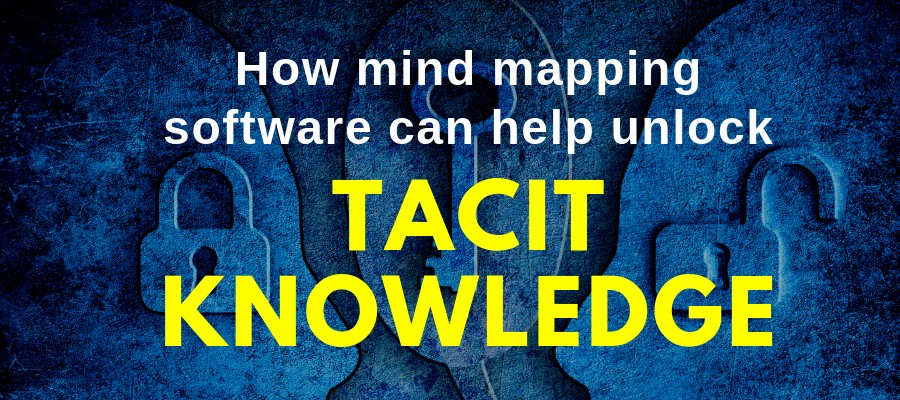
Tacit knowledge is undervalued by most executives. But it’s potentially one of the most valuable assets any organization owns, according to a Canadian lawyer who has made knowledge management a key part of his organization’s culture. A key tool Gary Goodwin and his staff use to capture, organize and share tacit knowledge at Ducks Unlimited is mind mapping software.
In this interview, he explains how he discovered this visual thinking tool and how he has incorporated it into the non-profit’s operations.
Chuck Frey: In a recent article in Canadian Lawyer, you describe a scenario where you had to assemble a cross-functional team to reconstruct tacit knowledge in order to tackle a big project. Is this a common problem for many types of businesses today?
 Gary Goodwin: Definitely. So much information is scattered across the organization. The difficulty is trying to draw it out of people and then having others incorporate it into their own thinking.
Gary Goodwin: Definitely. So much information is scattered across the organization. The difficulty is trying to draw it out of people and then having others incorporate it into their own thinking.
Frey: From what I’ve seen, this problem has been exacerbated by all of the downsizings and rightsizings that took place during the last decade. All of that knowledge walked out the door with those laid-off people, and it’s never coming back. Would you agree?
Goodwin: Wholeheartedly. Companies can easily calculate reduced headcount. They cannot easily see or calculate the value of the knowledge walking out the door since that is all future lost opportunities.
Frey: For those of my readers who may not be familiar with the term tacit knowledge, what does it mean in layman‘s terms? Why is it such a problem to manage?
Goodwin: Tacit knowledge is basically all of the information that a person has. But it goes beyond simply, facts, information, knowledge ending in wisdom. It also includes all of the wisdom surrounding a particular project or area. How does this new project coming down the pipe fit in with everything surrounding it within an organization?
Frey: You talk about the need to enable a progression from information to knowledge and wisdom. If a firm is able to do this, what benefits does that bring to the table?
Goodwin: As briefly mentioned above, having wisdom allows you to see how something new could fit with what already exists. You have the necessary context to incorporate new information. This information then leads to greater knowledge and wisdom. If someone is merely collecting facts and information, then they don’t know what to do with it. How do those new facts fit in with developing new business plans or strategies, or simply solving a problem?
Frey: Why don’t firms pay more attention to capturing tacit knowledge?
Goodwin: Perhaps they think its captured in the various emails and policies. But how will any new person be able to go through all of that past material and see what is going on?
Frey: Why is the standard business software toolset (e.g., Microsoft Office, Google Docs/Sheets, etc.) so inefficient at capturing tacit knowledge?
Goodwin: These tools capture facts and information. The context for the information is lost, or never there in the first place.
Frey: Does text-based information tend to obscure context? If so, why do you think that is?
Goodwin: Text does not provide the relevant importance of various pieces of information. If you read the entire document and bring in other outside understanding, then perhaps a text document could facilitate it.
Frey: How did you first discover mind mapping software, and what was the potential you saw in it?
Goodwin: Finding the software was by accident. I was simply playing around in Microsoft Teams and saw this application. One shouldn’t judge an application by its cover so to speak, but that’s what happened.
Frey: What is it about visual mapping that enables teams to build collections of knowledge and wisdom from information?
Goodwin: I have used mind maps for years to understand how information fits together and to recall larger areas of information during exams. The visual nature of mind mapping provides immediate context. An important aspect of knowledge management.
Frey: When you first started out with mind maps in your practice, how did you using them?
Goodwin: I used them when I was doing my LLM from the University of London. There was so much information, that how everything fit together for an overall policy could get lost. Mind Maps helped me structure the information so that I could recall it. Then when I had an exam question, I quickly drew out the entire mind map for that part of the course, which then allowed me to more quickly identify all of the issues.
Frey: How has your usage of them evolved over time?
Goodwin: Yes, I used them pretty much for my own purposes. Then I started to use them to explain how various parts fit together in a particular project. I also started using them to write articles. Seeing the entire article on one page allowed me to more logically fit together an article to give it more of a story arc.
Frey: How does mind mapping help make context more explicit?
Goodwin: This is about the only way to see context all at once. In a text-driven document, you have to read all of it, and even then you might miss the context.
Frey: Do you find that it also helps to enable consensus-building? If so, why do you think it’s so effective in this role?
Goodwin: It helps develop a dialogue, which is the explanation and delivery of information. Once everyone is on the same page in understanding, then you can go to consensus building.
Frey: How does the ability to integrate MindMeister with Teams help you?
Goodwin: If I can explain anything more quickly and get people up to speed faster, then my time can be spent on other things.
Frey: Can you give me some examples where the ability to attach documents and files to mind maps has been an advantage in your legal setting?
Goodwin: By having a certain central thought, and then perhaps a secondary bubble on the history of a particular license application, then you can attach a link to what the license was. So people can then decide to link to the old license if they feel they need it to understand further. Simply putting it into a long memo can confuse people or dilute what you are trying to accomplish.
Frey: What tips do you have for business leaders and knowledge managers who want to use mind mapping for knowledge management?
Goodwin: People have to see the benefit of it for themselves. Trying to force people to do something can simply backfire.

Leave a Reply